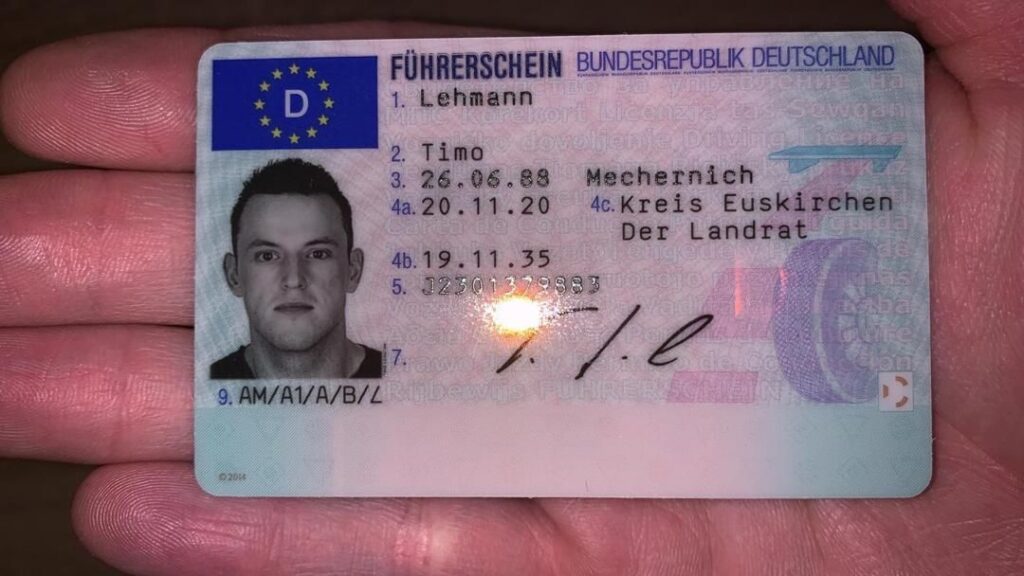Understanding Road Traffic Regulations: A Comprehensive Guide
Roadway traffic policies are essential for making sure the security of vehicle drivers, pedestrians, and other roadway users. These laws govern the operation of cars, the habits of motorists and pedestrians, and assist in smooth traffic flow. Führerschein Kaufen Seriös explores the numerous aspects of roadway traffic regulations, their value, and some typical guidelines and regulations that every road user should recognize with.
The Importance of Road Traffic Regulations
Roadway traffic regulations serve a number of essential purposes:
- Safety: They are primarily developed to safeguard the lives of individuals on the roadway, lowering accidents and injuries.
- Organized Traffic Flow: By establishing clear guidelines, these regulations help in handling the flow of cars and reducing congestion.
- Defense of Pedestrian Rights: They make sure that pedestrian crossings and rights-of-way are appreciated, promoting more secure travel on foot.
- Ecological Considerations: Certain guidelines intend to lower ecological impact, encouraging environmentally friendly driving practices.
- Legal Framework: They provide legal responsibility for motorists and pedestrians, marking charges for offenses.
Secret Elements of Road Traffic Regulations
Understanding roadway traffic guidelines is vital for compliance and safety. Below are a few of the crucial elements:
| Element | Description |
|---|---|
| Traffic Signs | Numerous signs that provide information and directions to drivers. |
| Traffic Signals | Lights that manage the flow of traffic at crossways. |
| Speed Limits | Optimum and minimum speed limitations set for various roadway types. |
| Access Rules | Guidelines on which roadway users should go initially at intersections. |
| Seat Belt Regulations | Laws mandating the wearing of safety belt for motorist and passengers. |
| Driving Under the Influence | Strict penalties for operating a vehicle while impaired by alcohol or drugs. |
| Car Registration and Licensing | Requirements for lorries to be registered and chauffeurs to possess valid licenses. |
Typical Traffic Regulations
Although traffic guidelines can differ from one nation to another, some typical rules are typically observed worldwide:
1. Speed Limits
Many jurisdictions enforce speed limitations based on roadway type and area, such as:
- Residential locations: 25-35 mph
- Urban areas: 30-50 miles per hour
- Highways and highways: 55-70 mph
2. Drinking and Driving
Driving under the impact of alcohol or drugs is prohibited in a lot of locations. Typical blood alcohol concentration (BAC) limits are:
- 0.08% for general drivers
- 0.00% for beginner or commercial chauffeurs
3. Safety Belt Usage
Safety belt need to be worn by all residents in a lorry. Failure to comply can cause fines.
4. Pedestrian Crossings
Drivers need to yield to pedestrians at significant crosswalks and adhere to signals directing pedestrian movement.
5. Mobile Phone Use
Using handheld devices while driving is forbidden in many locations to minimize diversions.
Frequently asked question Section
Q1: What should I do if I witness a traffic infraction?
If you observe a traffic violation, you should collect as much information as possible (automobile description, license plate number, location, and time) and report it to regional police.
Q2: How can I remain upgraded on modifications in traffic regulations?
Traffic laws can change regularly. Updates are typically published by city government sites. It is suggested to follow regional news or traffic law enforcement firms' announcements for any changes.
Q3: Are there specific traffic guidelines for business motorists?
Yes, commercial chauffeurs frequently face more stringent policies, such as driving hour constraints, lorry assessments, and unique licensing requirements.
Q4: What takes place if I break traffic regulations?
Charges for breaking traffic laws can include fines, points on your license, and in extreme cases, jail time. Repeated violations may result in the suspension of driving privileges.
Q5: How do traffic regulations affect public transportation?
Traffic regulations are vital for public transport systems to function efficiently. They help in establishing bus lanes, controling taxi services, and guaranteeing that public transportation cars follow safety requirements.
Road traffic guidelines play a pivotal role in preserving the security and order of roads globally. Comprehending Führerschein Kaufen Darknet is not simply a legal obligation but a moral one that promotes the wellness of all roadway users. Continuously updating oneself about traffic guidelines and adhering to them can greatly lower the risks connected with roadway travel. As communities evolve and innovations boost, these regulations may also adjust, demanding constant knowing for motorists, bicyclists, and pedestrians alike.
By keeping informed and staying certified with road traffic policies, individuals contribute positively to the shared duty of roadway safety, eventually reducing mishaps and conserving lives.

